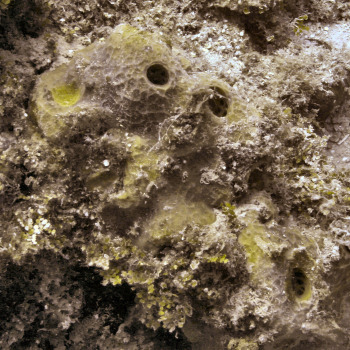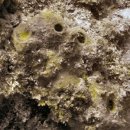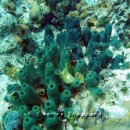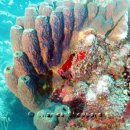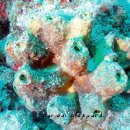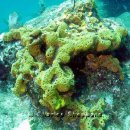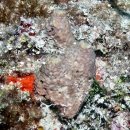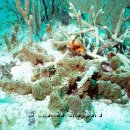| Common names: |
Pitted sponge |
| Growth Form: |
Massive amorphous to lobate (up to 20 cm across, 15 cm high), sometimes with distinct tubes or cones projecting from a common mass or thin base; less often as attached irregular lobate runners. |
| Surface: |
Uniquely ridged appearance, with meandering ridges usually forming a honeycombed structure on at least part of surface; ridges sometimes reduced to irregular conules. |
| Color: |
Externally highly variable, from bright yellow to red-brown in shaded areas, emerald to grass-green where exposed to light; it turns dark blue soon after death. Internal color bright yellow. |
| Consistency: |
Rubbery, slightly compressible, easy to cut. |
| Exudate: |
Purple when squeezed. |
| Oscules: |
On top of lobes or tubes, with a collarlike membrane; usually <2 cm across. |
| Skeletal components (Spicules, fibers): |
No spicules. Spongin fibers are of two diameters, 77-220 μm across, clear with a dense granular interior pith occupying 50-60%. |
| Skeletal Architecture: |
Simple fiber meshwork. No distinct exterior skeleton, but surface bears a non-detachable tough skin. Internal skeleton reaches the surface and forms the surface ridges. Elongated-polygonal meshes become lamellar near the surface and support the meandering ridges. |
| Ecology: |
A common reef species. |
| Distribution: |
South Florida and throughout the Caribbean Sea, with a wide depth range (12-24 m). |
| Notes: |
South Florida specimens fit well with literature descriptions. |
| References: |
Wiedenmayer (1977), van Soest (1978), Zea (1987). |
| Similar species: |
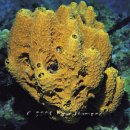
Aiolocroia crassa |
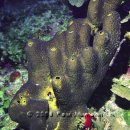
Smenospongia conulosa |
|
